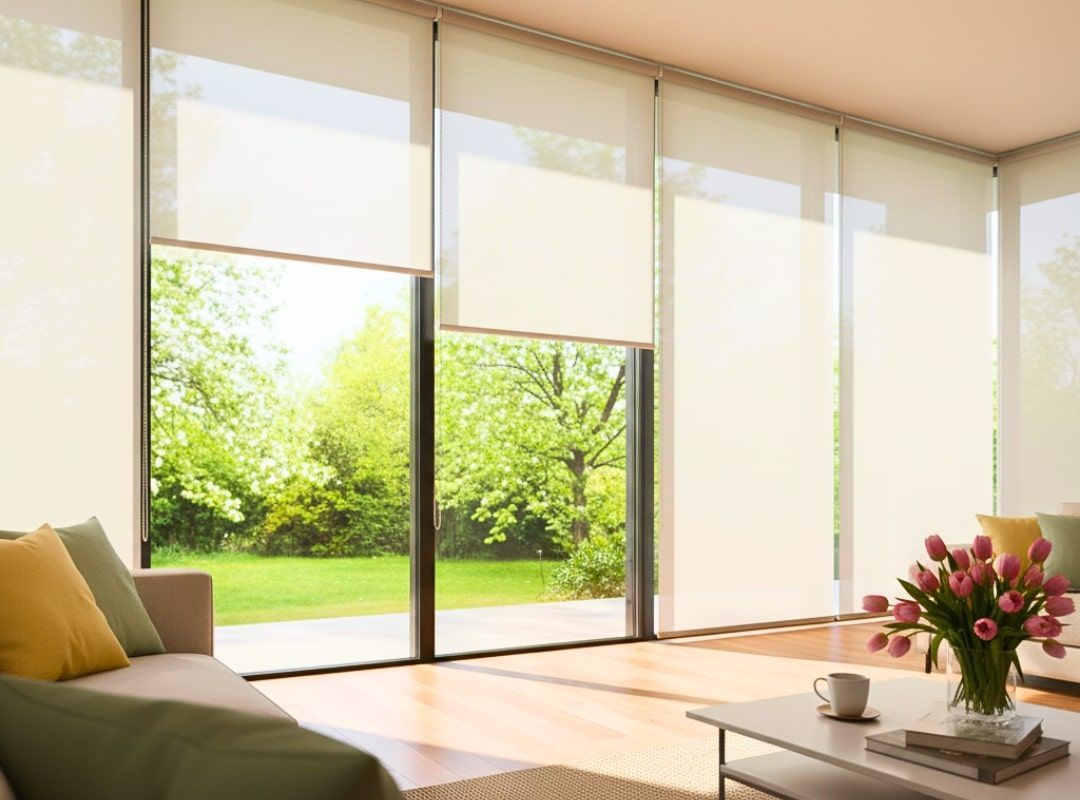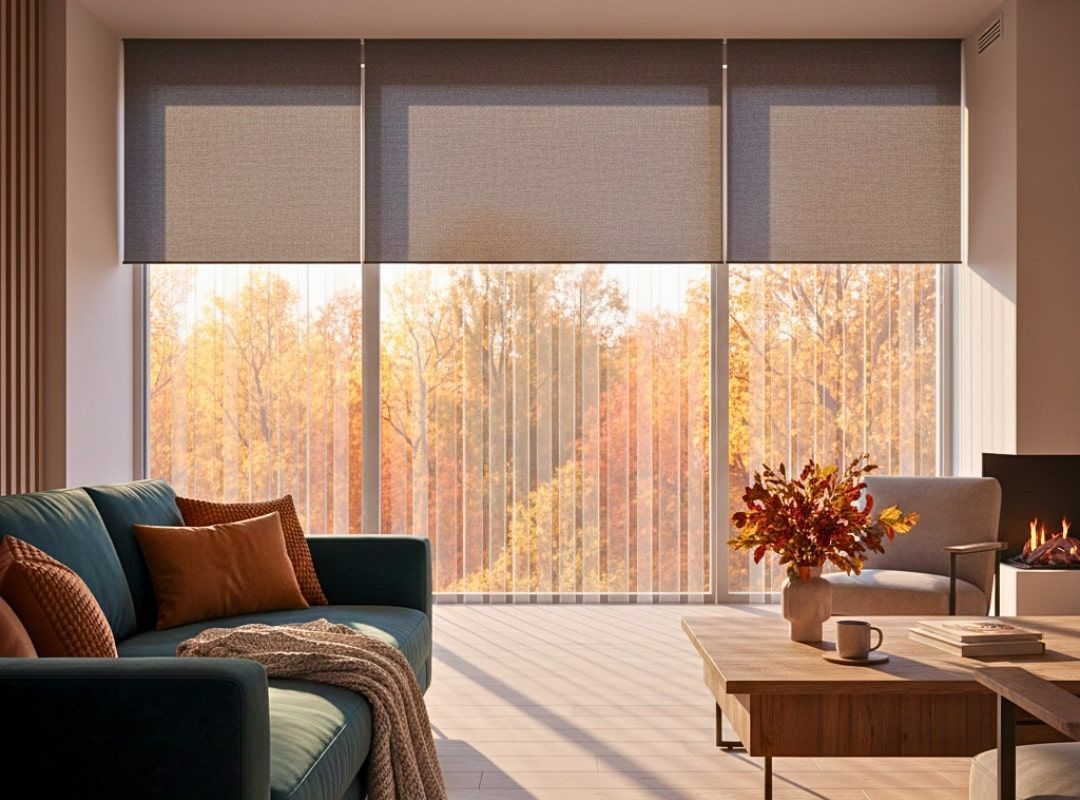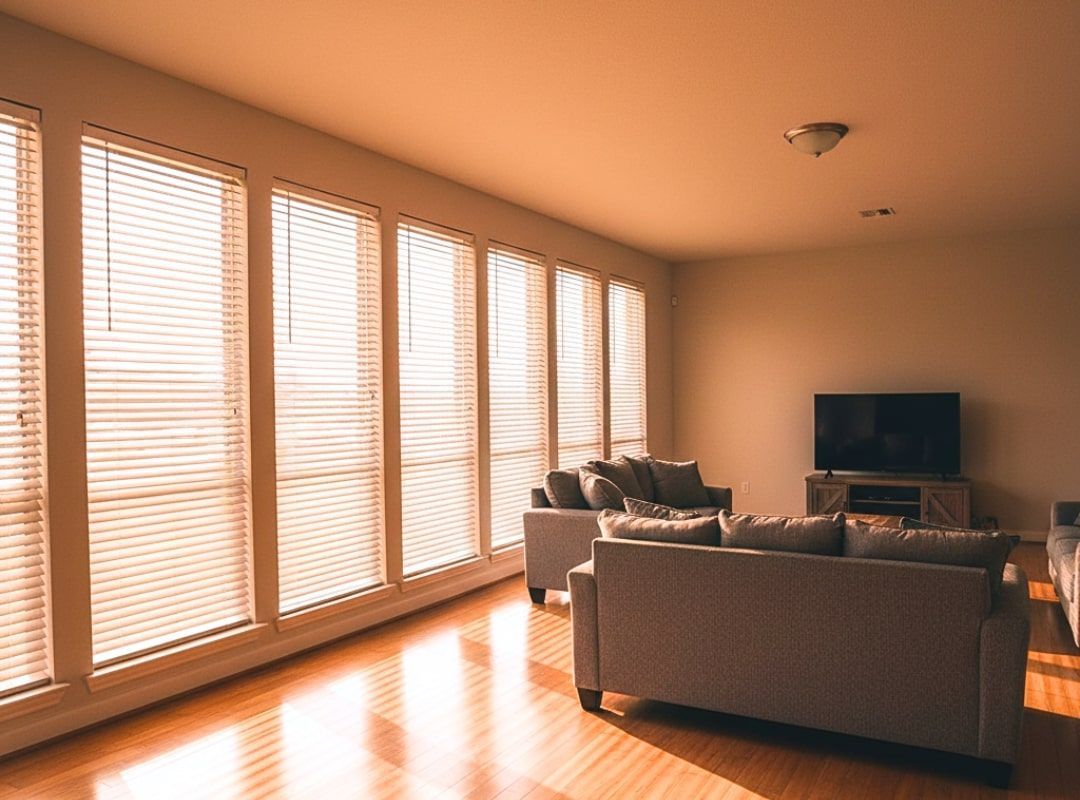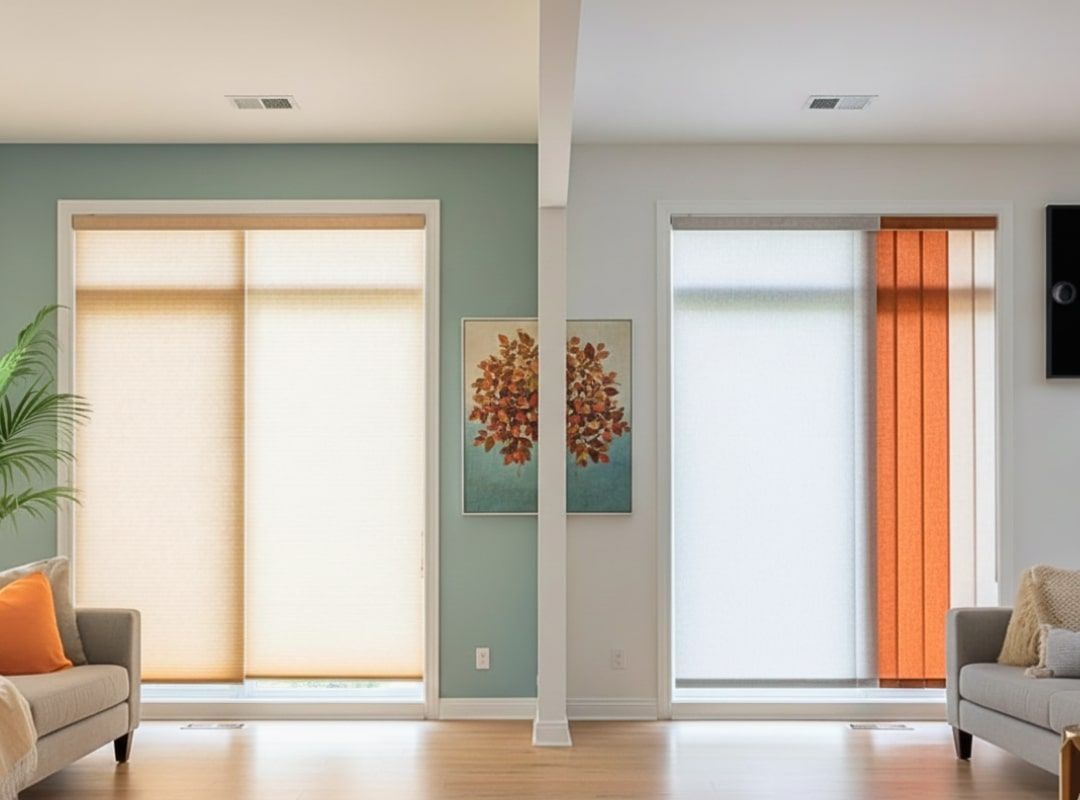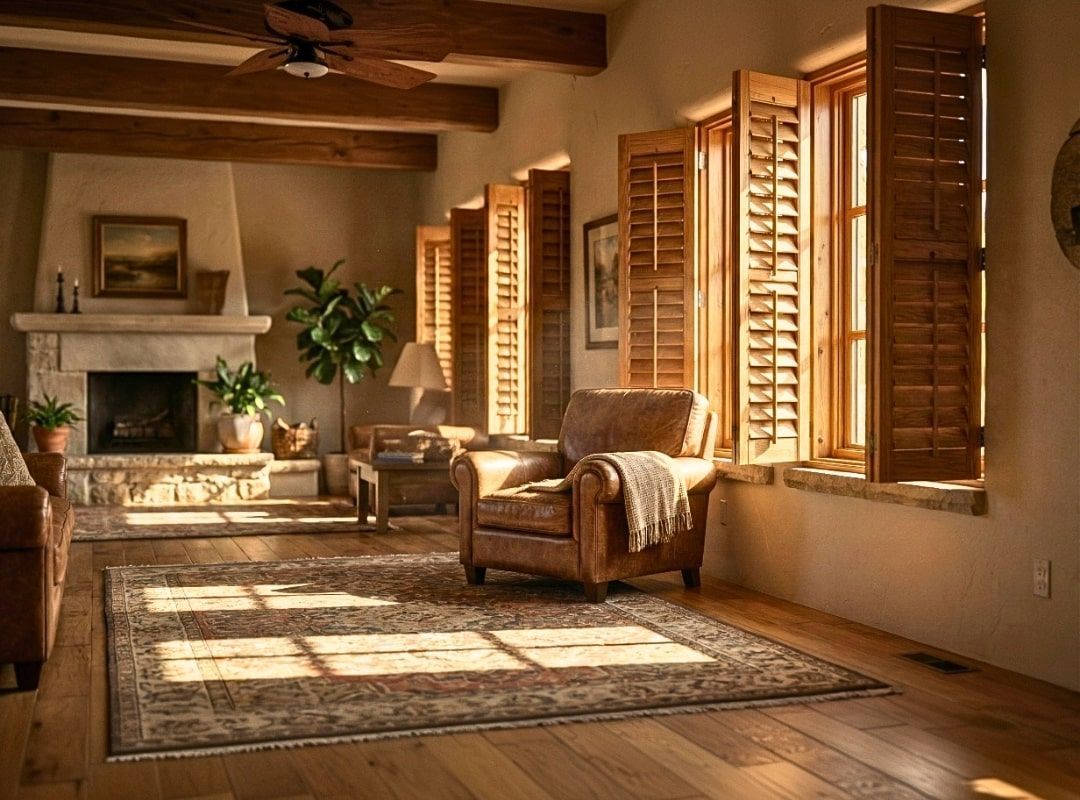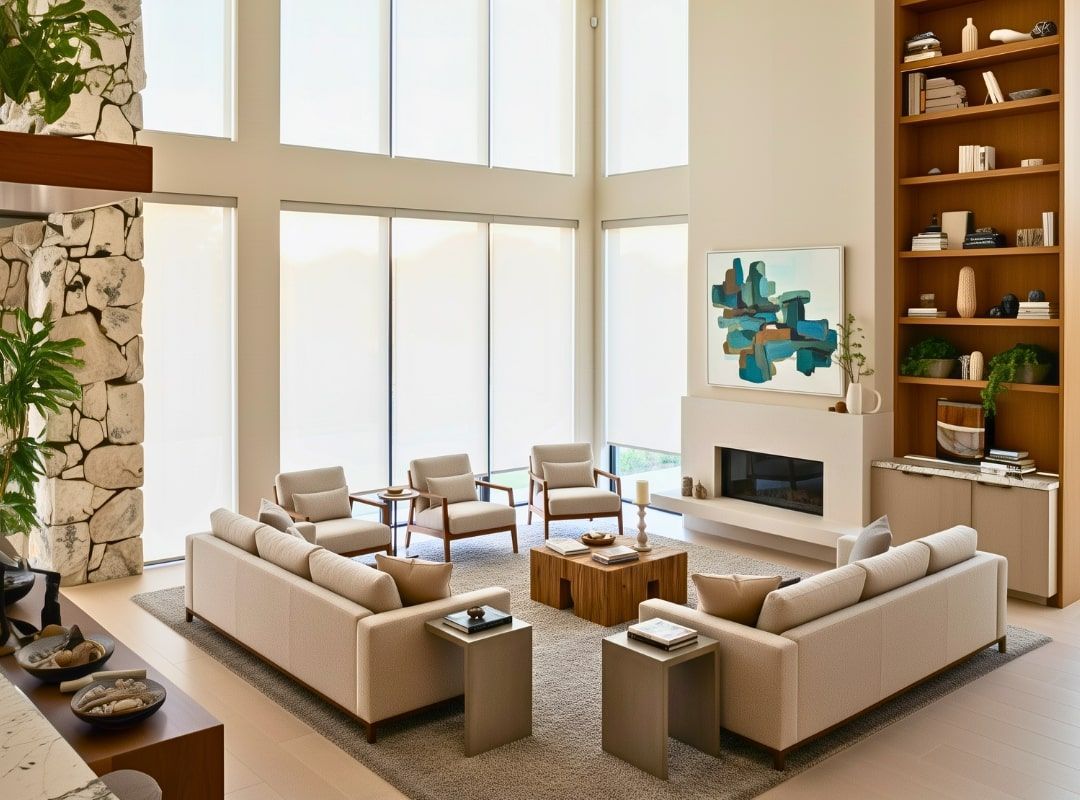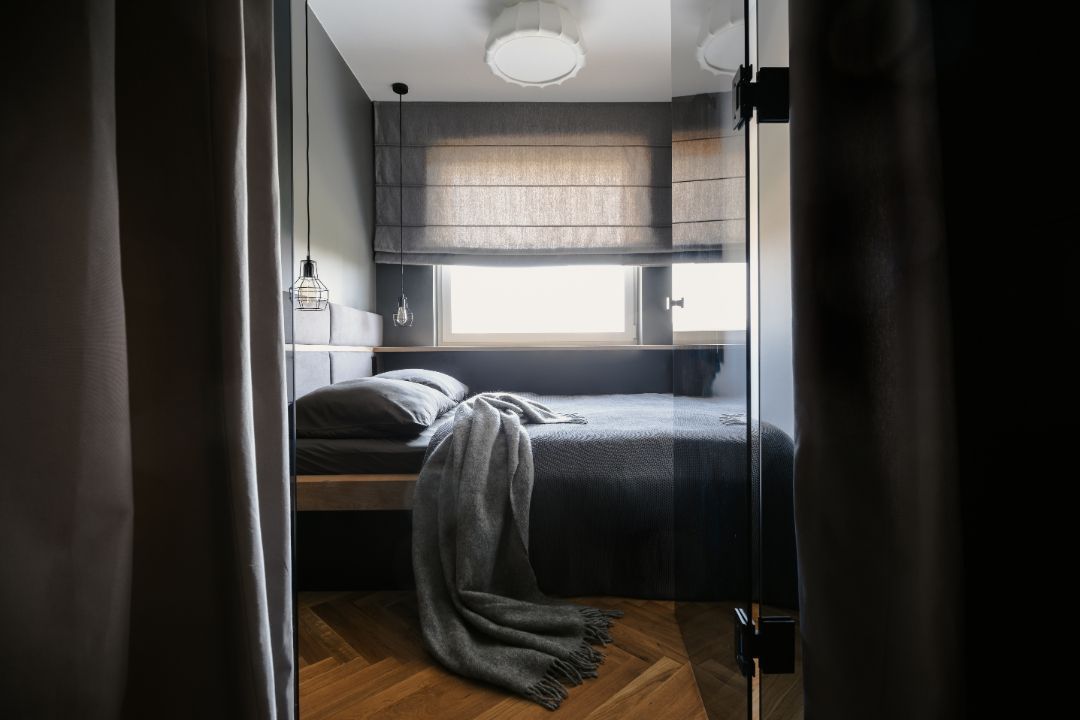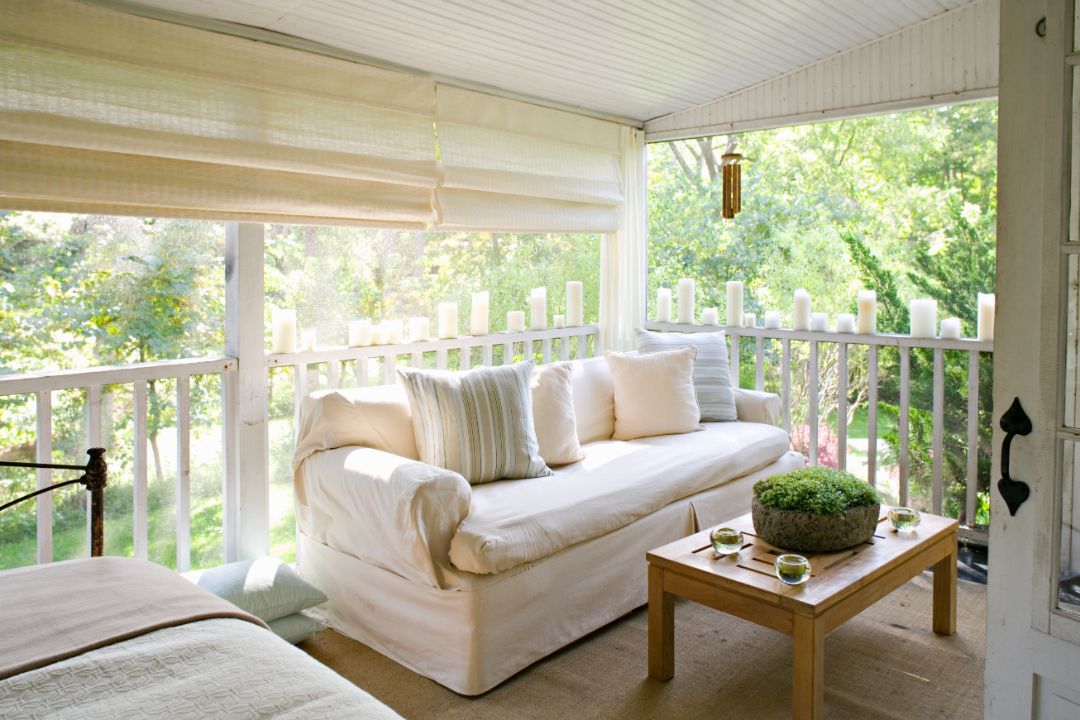Affordable Alternatives to Blinds: Budget-Friendly Window Treatments
TLDR;
Affordable alternatives to blinds include options like roller shades, cellular shades, bamboo shades, window films, shutters, curtains, and DIY treatments. These solutions balance privacy, light control, style, and cost, giving homeowners practical choices without overspending. Love Is Blinds TX provides expert insights to help you choose the right budget-friendly window treatments for your space.
Why People Look for Affordable Alternatives to Blinds
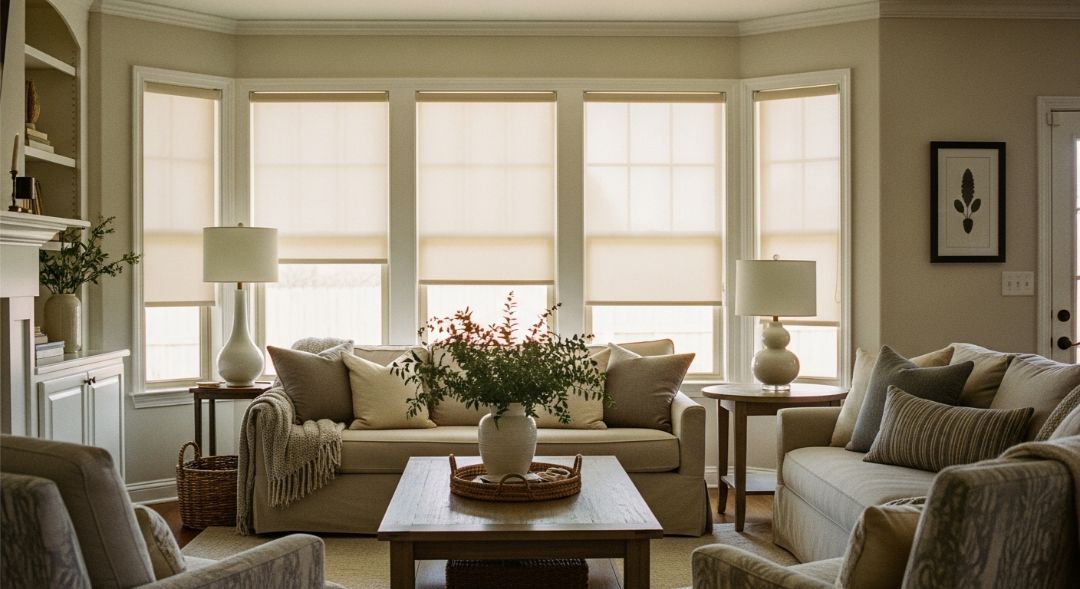
Blinds are common, but they are not always the most affordable, durable, or stylish option. Many homeowners also struggle when choosing between curtains and blinds, since each offers different strengths in terms of privacy, light control, and design. They can be difficult to clean, wear out in direct sunlight, and fail to meet every design need. Many homeowners want something different, especially in climates like Texas where heat, humidity, and strong sunlight demand tougher and more versatile solutions.
Alternatives to blinds often solve three key issues:
- Cost: More affordable per window compared to premium blinds.
- Durability: Some options last longer in intense sun.
- Style: Better fit for modern, rustic, or transitional interiors.
What to Consider Before Choosing an Alternative to Blinds
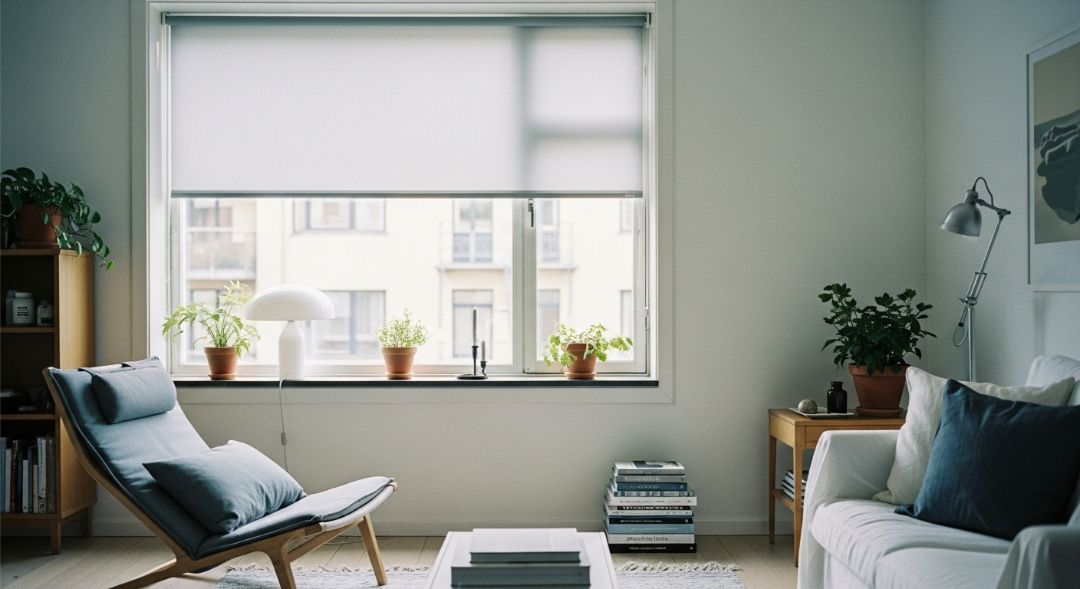
Light Control and Privacy Needs
Decide if your priority is blocking harsh sunlight, reducing glare, or achieving total blackout. Some treatments like cellular shades and blackout curtains excel at blocking light. Others like sheer curtains or bamboo shades filter light while maintaining brightness.
Energy Efficiency and Insulation in Texas
Texas summers bring extreme heat, so energy efficiency matters. Cellular shades trap air pockets, cutting cooling costs. Window films reduce UV rays and prevent furniture from fading. Shutters with tight louvers add insulation and reduce air leakage.
Material Durability and Maintenance
Choose materials that stand up to Texas humidity and sun exposure. Bamboo and faux wood resist warping. Homeowners often ask what is the best fabric for blinds, and the answer depends on whether you need insulation, easy cleaning, or UV resistance. Polyester curtains are washable and long-lasting. Avoid untreated natural wood near kitchens or bathrooms where moisture is common.
Installation and Hardware
Measure carefully. Decide between inside or outside mounting. Roller shades and window films are easy for DIY installation. Shutters and sliding panels often need professional help.
Cost and Budget Tiers
Break down expenses by treatment type:
- Low-cost under $50 per window: window film, basic curtains, DIY projects.
- Mid-range $50–$150 per window: roller shades, cellular shades, bamboo shades.
- Higher budget $150+ per window: shutters, custom sliding panels.
Top Affordable Alternatives to Blinds
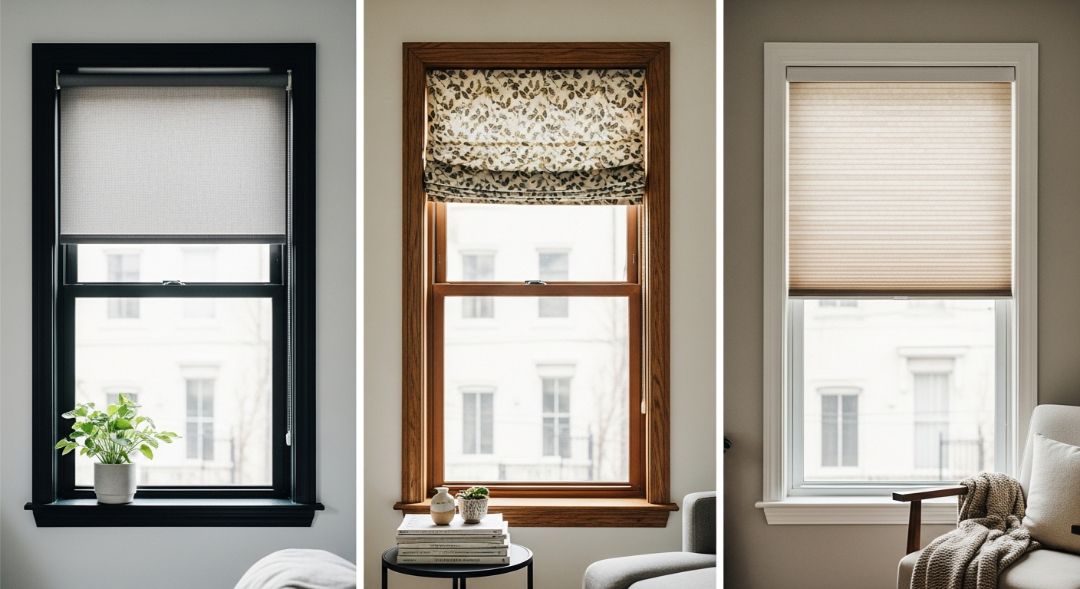
Roller Shades
Roller shades are fabric sheets that roll up neatly. They are simple, affordable, and come in blackout, sheer, or patterned options.
- Cost: $50–$100 per window
- Best for: Bedrooms, offices, or renters needing quick solutions
- Pros: Easy installation, wide range of colors
- Cons: Fabric may collect dust
Roman Shades
Roman shades fold in sections when raised. They add softness and elegance at a lower price than drapes.
- Cost: $75–$150 per window
- Best for: Living rooms and dining rooms
- Pros: Elegant design, custom fabric options
- Cons: May require dry cleaning depending on fabric
Cellular Shades
Cellular or honeycomb shades have air pockets that insulate windows. In hot states like Texas, they lower cooling costs.
- Cost: $60–$120 per window
- Best for: Bedrooms, living rooms with large sun exposure
- Pros: Excellent insulation, cordless safety options
- Cons: Limited style variety compared to curtains
Bamboo or Woven Wood Shades
Made from natural reeds and grasses, bamboo shades add texture and warmth.
- Cost: $50–$125 per window
- Best for: Rustic, farmhouse, or natural-themed interiors
- Pros: Eco-friendly, durable, stylish
- Cons: Less privacy without liners
Shutters (Faux Wood and Plantation)
Shutters (Faux Wood and Plantation)
Shutters are more expensive upfront but last for decades. Faux wood holds up well in Texas humidity, but some homeowners compare
vinyl or TPC blinds as an alternative, since both materials handle moisture better than traditional wood.
- Cost: $150–$300 per window
- Best for: Living rooms, kitchens, long-term investments
- Pros: Durable, adds home value, easy to clean
- Cons: Higher upfront cost
Sheer Curtains and Drapes
Curtains are timeless and versatile. Sheers filter sunlight while thicker fabrics block light fully.
- Cost: $30–$100 per window
- Best for: Bedrooms, living rooms, large windows
- Pros: Affordable, easy to change styles
- Cons: Require rods and frequent washing
Window Film and Frosted Glass Panels
Films stick directly to glass and are ideal for renters or temporary fixes.
- Cost: $20–$50 per window
- Best for: Bathrooms, offices, street-facing windows
- Pros: Blocks UV, reduces glare, easy to apply
- Cons: Limited privacy at night when lights are on
Sliding Panels or Panel Tracks
Large fabric or woven panels slide on tracks, perfect for wide windows and patios.
- Cost: $100–$200 per window
- Best for: Patio doors, large living rooms
- Pros: Modern look, covers large spaces easily
- Cons: Needs wall space to slide open
Non-Fabric Options
Metal screens, louvered slats, and laser-cut panels provide privacy and airflow.
- Cost: $75–$200 per window
- Best for: Outdoor patios, modern interiors
- Pros: Durable, stylish
- Cons: Less insulation
DIY and Upcycled Options
Repurposed fabric, thrifted drapes, or no-sew panels give affordable and creative solutions.
- Cost: Often under $20 per window
- Best for: Renters, budget projects
- Pros: Custom, low cost, sustainable
- Cons: May not last as long as commercial products
Cost Comparison and Local Insights in Texas
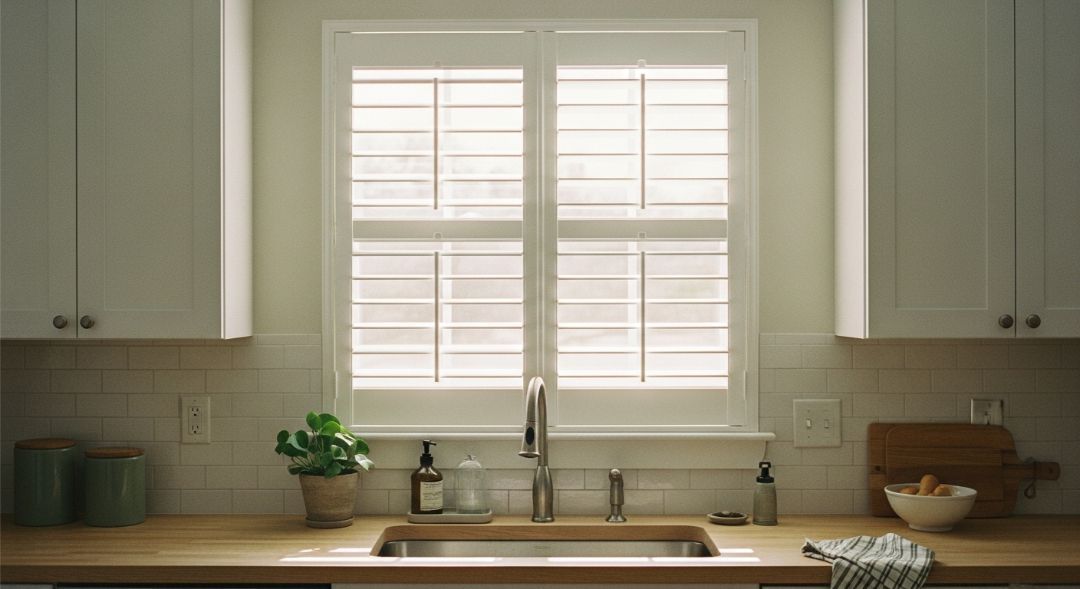
- Window film: $20–$50, ideal for renters
- Curtains: $30–$100, available in local Texas retailers like Target and Walmart
- Roller shades: $50–$100, found in home improvement stores
- Cellular shades: $60–$120, strong energy savings in hot summers
- Bamboo shades: $50–$125, popular for ranch-style homes
- Shutters: $150–$300, premium but long-lasting
Local stores in Dallas, Houston, and San Antonio often run seasonal discounts. Online retailers like Amazon and Wayfair give wider variety but may require self-installation.
Style Matching and Room-by-Room Advice
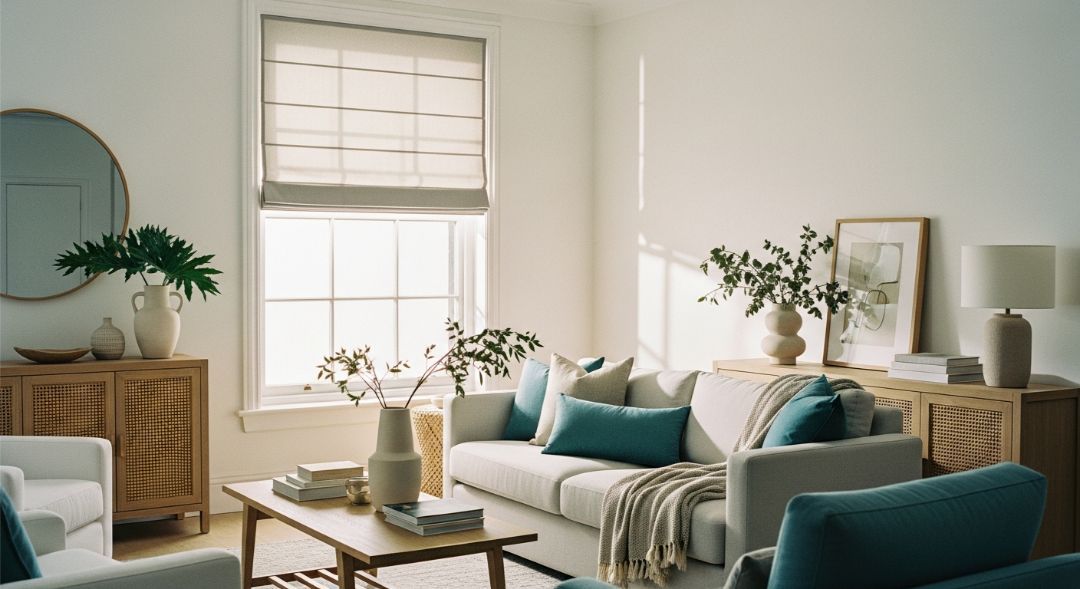
Living Room and Large Windows
Choose sliding panels or bamboo shades for wide openings. If you’re dealing with unique layouts, the Best Window Treatments for Bay Windows can provide inspiration, since angled or projecting windows require similarly tailored solutions. Use layered treatments, combining sheers with blackout curtains.
Bedrooms and Blackout Needs
Opt for cellular shades or blackout curtains for complete privacy. Add liners to bamboo or roman shades for better coverage.
Kitchens and Bathrooms
Use faux wood shutters or polyester roller shades. These resist moisture and are easy to clean.
Patios and Sun-Exposed Spaces
Sliding panels or outdoor-rated shutters work best. Window film reduces heat without bulky treatments.
DIY Tips and Common Mistakes to Avoid
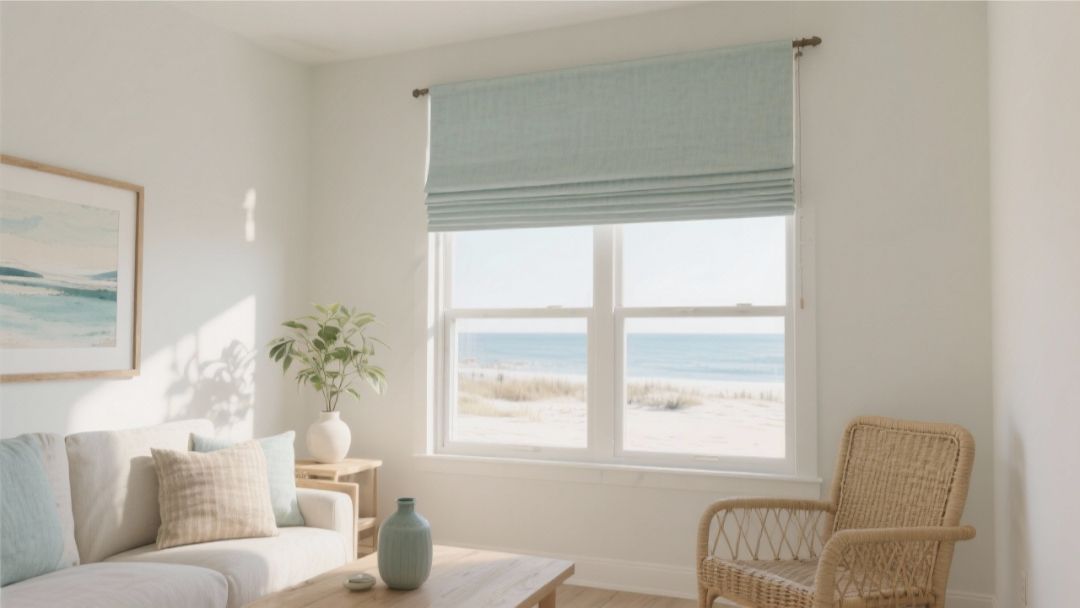
Measuring Correctly
- Measure width and height three times
- Decide between inside mount or outside mount
- Add extra inches for curtains to block more light
Safety Issues
- Choose cordless options in homes with children
- Avoid flammable materials near kitchens
- Secure rods and brackets properly
Choosing Materials for Texas Weather
- Use fade-resistant fabrics
- Avoid untreated wood in humid spaces
- Pick UV-blocking films to protect interiors
Budget Hacks and Upcycling Ideas
- Repurpose bed sheets as curtains
- Add blackout liners to inexpensive drapes
- Spray-paint old rods and brackets instead of replacing them
Environmental and Health Considerations
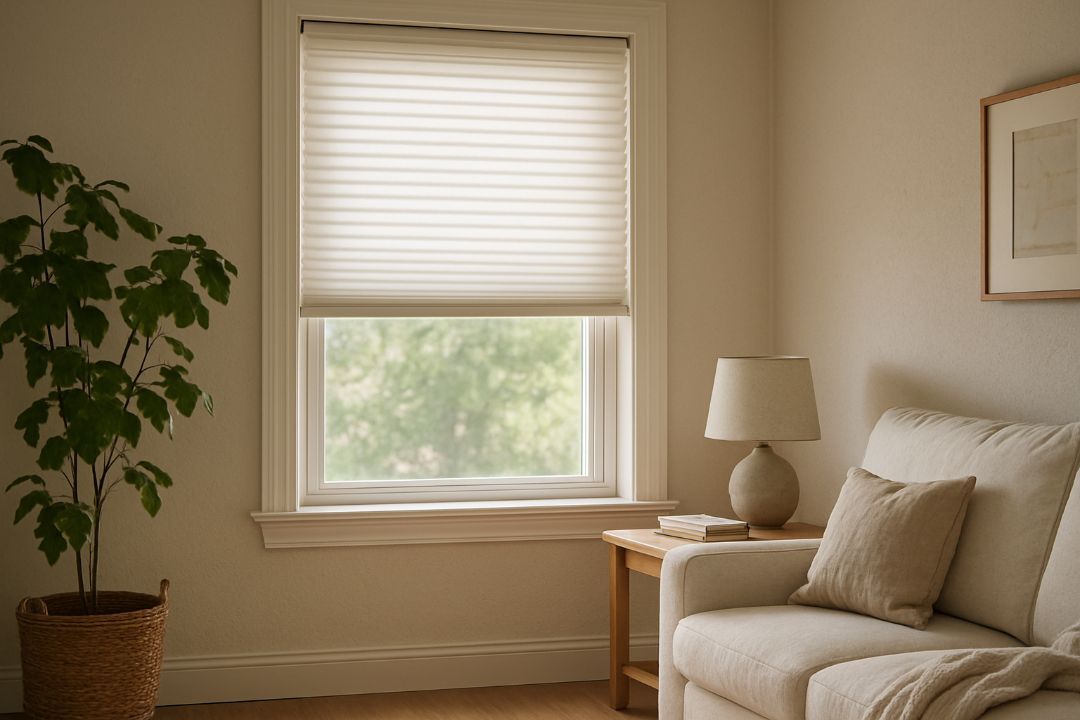
Sustainable Materials
Bamboo, recycled polyester, and FSC-certified wood are eco-friendly options.
UV Protection and Furniture Care
Window film and cellular shades reduce UV damage and extend the life of flooring and furniture.
Indoor Air Quality
Choose untreated or organic fabrics. Avoid treatments with chemical coatings that release odors over time.
FAQs
Are shades cheaper than blinds?
Yes, roller and cellular shades are often less expensive than high-quality blinds, especially for large windows.
Which window treatment is best for energy savings in hot climates?
Cellular shades are the top choice for insulation, followed by shutters and window films.
Can DIY window treatments look professional?
Yes, with careful measuring and clean finishing, DIY curtains or repurposed fabric panels can look polished.
What is the difference between shutters and shades?
Shutters are rigid and long-lasting, while shades are fabric-based and softer in appearance.
How often do you replace treatments?
Curtains may last 5–7 years, cellular shades 7–10 years, and shutters 15–20 years.
Affordable Window Treatment Choices with Love Is Blinds TX
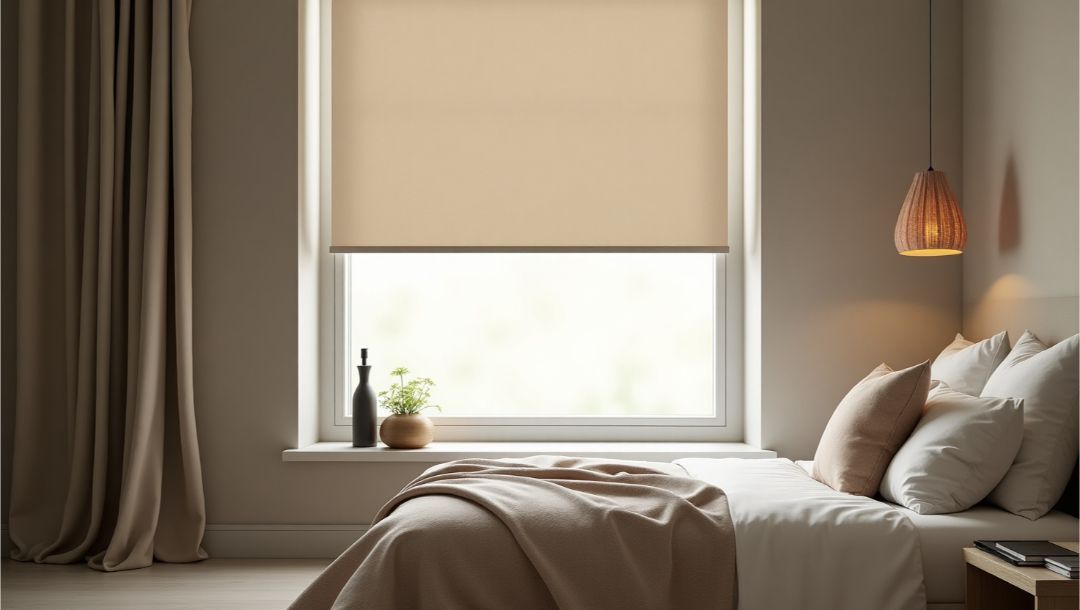
Affordable alternatives to blinds give you flexible options to control light, add privacy, and match your style. Whether you choose roller shades, shutters, bamboo shades, or a DIY project, there is a solution for every budget. Love Is Blinds TX helps homeowners across Texas make smart choices that balance cost, durability, and design. By considering your climate, budget, and style preferences, you can install window treatments that perform well and last for years.

